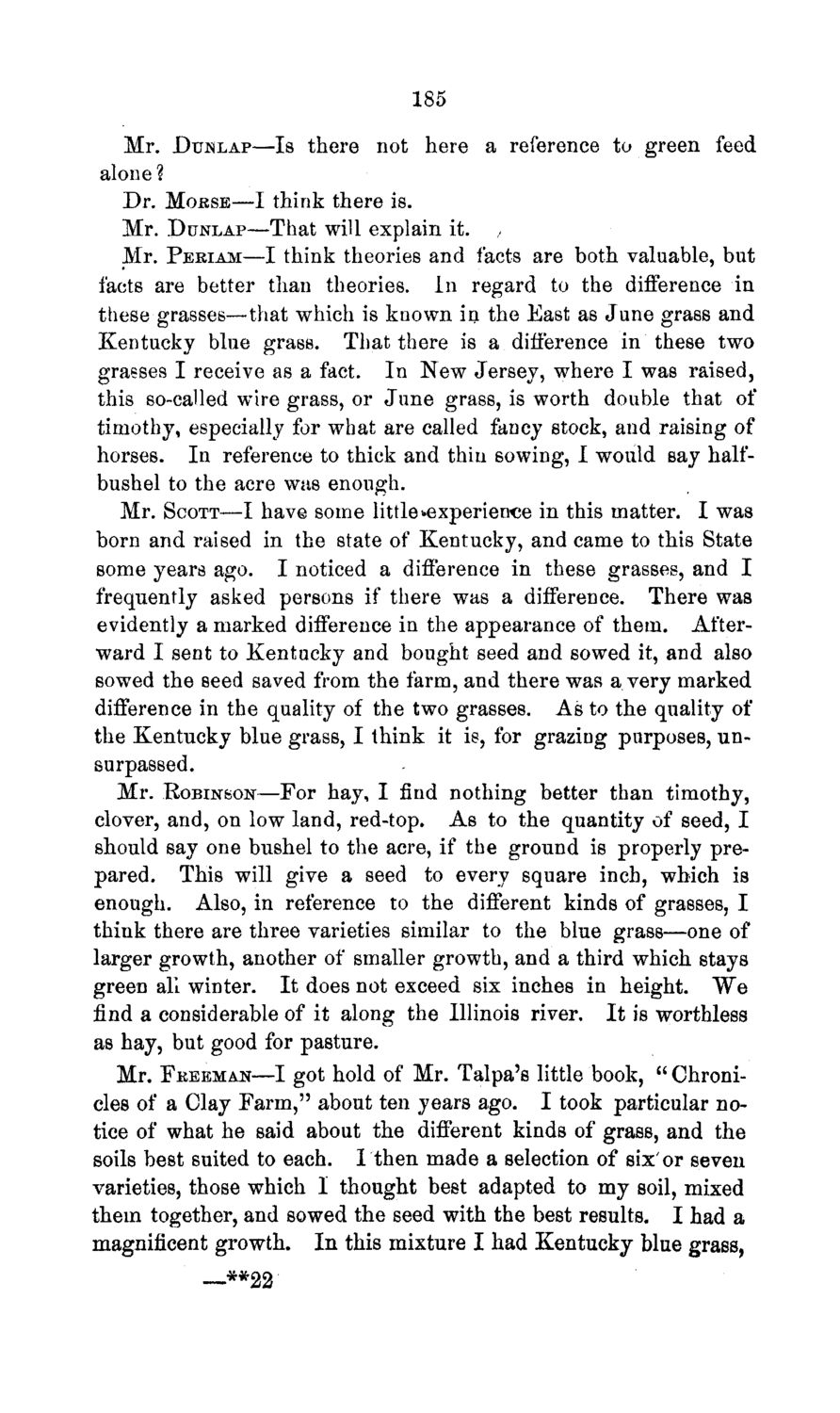| |
| |
Caption: Board of Trustees Minutes - 1869
This is a reduced-resolution page image for fast online browsing.

EXTRACTED TEXT FROM PAGE:
185 Mr. DUJSILAP—Is there not here a reference to green feed alone ? Dr. MORSE—I think there is. Mr. DUNLAP—That will explain it. , Mr. PERIAM—I think theories and facts are both valuable, but facts are better than theories. In regard to the difference in these grasses—that which is known in the East as June grass and Kentucky blue grass. That there is a difference in these two grasses I receive as a fact. In New Jersey, where I was raised, this so-called wire grass, or June grass, is worth double that of timothy, especially for what are called fancy stock, and raising of horses. In reference to thick and thin sowing, I would say halfbushel to the acre was enough. Mr. SCOTT—I have some little ^experience in this matter. I was born and raised in the state of Kentucky, and came to this State some years ago. I noticed a difference in these grasses, and I frequently asked persons if there was a difference. There was evidently a marked difference in the appearance of them. Afterward I sent to Kentucky and bought seed and sowed it, and also sowed the seed saved from the farm, and there was a very marked difference in the quality of the two grasses. As to the quality of the Kentucky blue grass, I think it is, for grazing purposes, unsurpassed. Mr. ROBINSON—For hay, I find nothing better than timothy, clover, and, on low land, red-top. As to the quantity of seed, I should say one bushel to the acre, if the ground is properly prepared. This will give a seed to every square inch, which is enough. Also, in reference to the different kinds of grasses, I think there are three varieties similar to the blue grass—one of larger growth, another of smaller growth, and a third which stays green all winter. It does not exceed six inches in height. We find a considerable of it along the Illinois river. I t is worthless as hay, but good for pasture. Mr. FREEMAN—I got hold of Mr. Talpa's little book, " Chronicles of a Clay Farm," about ten years ago. I took particular notice of what he said about the different kinds of grass, and the soils best suited to each. 1 then made a selection of six'or seven varieties, those which I thought best adapted to my soil, mixed them together, and sowed the seed with the best results. I had a magnificent growth. I n this mixture I had Kentucky blue grass, _**22
| |